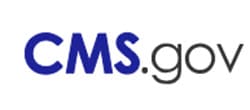
The Centers for Medicare & Medicaid Services (CMS) today announced a net savings of 44%, or $12 billion, from last year’s negotiated Medicare spending on 15 drugs used widely to treat cancer and other serious chronic conditions. These savings are the result of the Trump Administration’s aggressive push for lower prices for Medicare beneficiaries.
The Maximum Fair Prices (MFPs) for these 15 drugs will become effective January 1, 2027, bringing the total number of negotiated drugs to 25 when combined with the 10 previously negotiated drugs with MFPs taking effect January 1, 2026. The 15 drugs in this second negotiation cycle, used to treat cancer, diabetes, asthma, and other chronic illnesses, represent some of the highest Medicare Part D spending. The MFPs offer substantial savings for both beneficiaries and the Medicare program.
“President Trump directed us to stop at nothing to lower health care costs for the American people,” said Health and Human Services Secretary Robert F. Kennedy, Jr. “As we work to Make America Healthy Again, we will use every tool at our disposal to deliver affordable health care to seniors.”
“This year’s results stand in stark contrast to last year’s,” said CMS Administrator Mehmet Oz, MD. “Using the same process with a bolder direction, we have achieved substantially better outcomes for taxpayers and seniors in the Medicare Part D program — not the modest or even counterproductive ‘deals’ we saw before.”
“Whether through the Inflation Reduction Act or President Trump’s Most Favored Nation policy, this is what serious, fair, and disciplined negotiation looks like,” said CMS Deputy Administrator and Medicare Director Chris Klomp. “I’m deeply proud of our team, who execute exceptionally well to bring affordability to the country in everything we do.”
Today’s announcement demonstrates the Administration’s continued commitment to lowering prescription drug costs and ensuring Medicare beneficiaries have access to necessary medications at lower agreed-upon prices. By establishing better prices for high-cost drugs, CMS ensures patients experience financial relief at the pharmacy counter.
- Between January 1, 2024, and December 31, 2024, about 5.3 million people with Medicare Part D coverage used these drugs to treat a variety of conditions, such as cancer, type 2 diabetes, and asthma.
- These selected drugs accounted for about $42.5 billion in total gross covered prescription drug costs under Medicare Part D, or about 15%, during that period.
The newly negotiated prices will generate billions in savings for Medicare, supporting its long-term sustainability.
For more information about the Medicare Drug Price Negotiation Program, including the fact sheet, visit: https://www.cms.gov/priorities/medicare-prescription-drug-affordability/overview/medicare-drug-price-negotiation-program.
For a fact sheet on the IPAY 2027 MFP visit: https://www.cms.gov/files/document/fact-sheet-negotiated-prices-ipay-2027.pdf.
For a plain language infographic on the IPAY 2027 MFP visit: https://www.cms.gov/files/document/infographic-negotiated-prices-ipay-2027.pdf.
